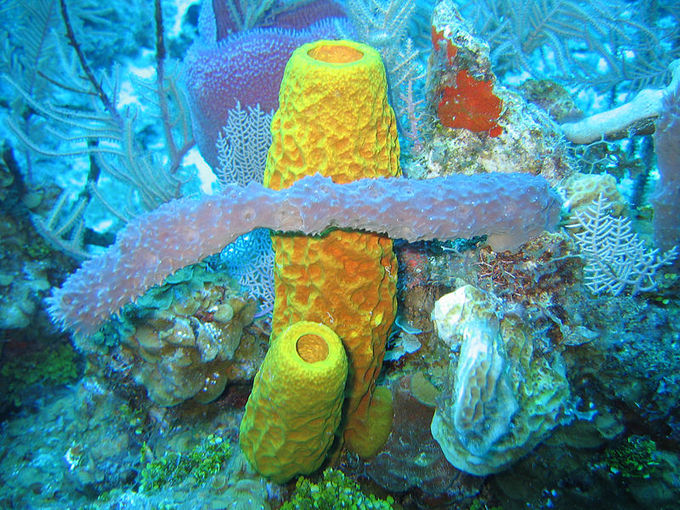27.1B: Complex Tissue Structure
- Page ID
- 13690
Animals, besides Parazoa (sponges), are characterized by specialized tissues such as muscle, nerve, connective, and epithelial tissues.
- List the various specialized tissue types found in animals and describe their functions
Key Points
- Animal cells don’t have cell walls; their cells may be embedded in an extracellular matrix and have unique structures for intercellular communication.
- Animals have nerve and muscle tissues, which provide coordination and movement; these are not present in plants and fungi.
- Complex animal bodies demand connective tissues made up of organic and inorganic materials that provide support and structure.
- Animals are also characterized by epithelial tissues, like the epidermis, which function in secretion and protection.
- The animal kingdom is divided into Parazoa (sponges), which do not contain true specialized tissues, and Eumetazoa (all other animals), which do contain true specialized tissues.
Key Terms
- Parazoa: a taxonomic subkingdom within the kingdom Animalia; the sponges
- Eumetazoa: a taxonomic subkingdom, within kingdom Animalia; all animals except the sponges
- epithelial tissue: one of the four basic types of animal tissue, which line the cavities and surfaces of structures throughout the body, and also form many glands
Complex Tissue Structure
As multicellular organisms, animals differ from plants and fungi because their cells don’t have cell walls; their cells may be embedded in an extracellular matrix (such as bone, skin, or connective tissue); and their cells have unique structures for intercellular communication (such as gap junctions). In addition, animals possess unique tissues, absent in fungi and plants, which allow coordination (nerve tissue) and motility (muscle tissue). Animals are also characterized by specialized connective tissues that provide structural support for cells and organs. This connective tissue constitutes the extracellular surroundings of cells and is made up of organic and inorganic materials. In vertebrates, bone tissue is a type of connective tissue that supports the entire body structure. The complex bodies and activities of vertebrates demand such supportive tissues. Epithelial tissues cover, line, protect, and secrete; these tissues include the epidermis of the integument: the lining of the digestive tract and trachea. They also make up the ducts of the liver and glands of advanced animals.
The animal kingdom is divided into Parazoa (sponges) and Eumetazoa (all other animals). As very simple animals, the organisms in group Parazoa (“beside animal”) do not contain true specialized tissues. Although they do possess specialized cells that perform different functions, those cells are not organized into tissues. These organisms are considered animals since they lack the ability to make their own food. Animals with true tissues are in the group Eumetazoa (“true animals”). When we think of animals, we usually think of Eumetazoans, since most animals fall into this category.

The different types of tissues in true animals are responsible for carrying out specific functions for the organism. This differentiation and specialization of tissues is part of what allows for such incredible animal diversity. For example, the evolution of nerve tissues and muscle tissues has resulted in animals’ unique ability to rapidly sense and respond to changes in their environment. This allows animals to survive in environments where they must compete with other species to meet their nutritional demands.


